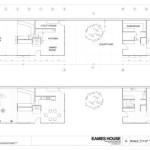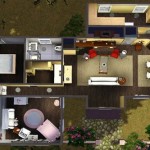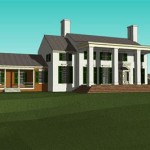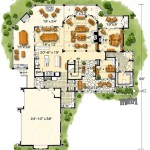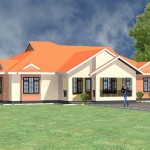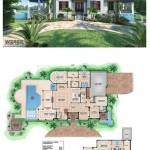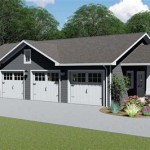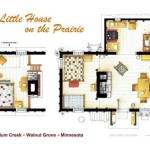Affordable Two-Story House Plans: Maximizing Space on a Budget
The dream of homeownership often comes with financial considerations, and the design of the house plays a significant role in its overall cost. Affordable two-story house plans represent a practical solution for homebuyers seeking to maximize living space without exceeding their budget. These plans offer a way to accommodate growing families, provide dedicated areas for work and relaxation, and potentially increase property value, all while keeping construction costs manageable.
The cost-effectiveness of two-story house plans stems from several factors. Building vertically reduces the required land footprint, which can be particularly important in areas where land prices are high. A smaller foundation and roof area also translate into lower material costs. Furthermore, the efficient use of space can lead to energy savings due to a more compact thermal envelope, resulting in reduced heating and cooling expenses over the long term.
However, navigating the world of two-story house plans requires careful consideration. Factors such as site conditions, local building codes, and personal needs must be thoroughly evaluated to ensure the chosen plan is both affordable and suitable. This article aims to provide a comprehensive overview of affordable two-story house plans, exploring their benefits, key considerations, and essential elements to help potential homeowners make informed decisions.
Understanding the Cost Advantages of Two-Story Designs
The primary driver behind the affordability of two-story house plans is the reduction in material and labor costs associated with a smaller footprint. A single-story house of the same square footage requires a significantly larger foundation, which is one of the most expensive components of a home. The extensive excavation, concrete pouring, and labor involved in creating a large foundation contribute substantially to the overall budget.
Similarly, the roof area of a single-story home necessitates more materials and labor. Roofing materials, such as shingles, tiles, or metal, are purchased by the square foot, and the increased surface area of a single-story roof directly translates into higher material costs. Labor costs are also affected, as the installation of roofing materials over a larger area requires more time and manpower.
Furthermore, two-story designs often benefit from simplified plumbing and electrical systems. Concentrating the plumbing fixtures and electrical outlets within a smaller footprint can reduce the length of pipes and wiring runs, leading to material savings. This centralization can also streamline the installation process, reducing labor costs.
Another cost advantage lies in the potential for energy efficiency. A more compact two-story home typically has a smaller exterior surface area exposed to the elements compared to a sprawling single-story dwelling. This reduced exposure minimizes heat loss in the winter and heat gain in the summer, leading to lower energy consumption for heating and cooling. By incorporating energy-efficient windows, insulation, and HVAC systems, homeowners can further reduce their utility bills and improve the long-term affordability of their two-story home.
In addition to direct cost savings, two-story homes can also offer indirect financial benefits. A smaller lot size generally requires less landscaping, reducing the cost of materials and maintenance. Property taxes may also be lower, depending on local tax assessments, as the assessed value is often influenced by the size of the land.
Key Considerations When Selecting an Affordable Two-Story Plan
While the advantages of two-story designs are undeniable, careful planning is essential to ensure affordability and suitability. Several factors must be considered before selecting a plan and commencing construction.
Site Conditions: The topography and soil conditions of the building site play a crucial role in determining the feasibility and cost of a two-story home. Sloping lots may require extensive excavation or retaining walls, adding to the overall expense. Unstable soil can necessitate specialized foundation designs, such as pier and beam foundations, which are generally more costly than conventional slab foundations. A thorough geotechnical investigation is recommended to assess the site's suitability and identify any potential challenges.
Local Building Codes and Regulations: Building codes vary significantly from one jurisdiction to another, and compliance is mandatory. Codes dictate requirements for structural integrity, fire safety, energy efficiency, and accessibility. Some municipalities may have restrictions on building height or setbacks, which can influence the design of a two-story home. It is essential to consult with local building officials to understand the applicable codes and regulations before finalizing a plan. Failure to comply with building codes can result in delays, fines, and costly modifications.
Accessibility: Two-story homes inherently present accessibility challenges for individuals with mobility limitations. Stairs can be a barrier for elderly residents or those with disabilities. If accessibility is a concern, consider incorporating design features such as a first-floor master suite, wider doorways, and ramps. The installation of an elevator or lift can provide access to the second floor but will significantly increase the cost of the project. Alternatively, consider designing a "future-proof" home that can be easily adapted for accessibility needs later in life.
Interior Layout and Functionality: The interior layout of a two-story home should be carefully considered to ensure it meets the needs of the residents. Common living areas, such as the living room, kitchen, and dining room, are typically located on the first floor, while bedrooms and bathrooms are often situated on the second floor. The placement of these spaces should be optimized for functionality and convenience. Consider factors such as traffic flow, natural light, and noise levels when planning the layout.
Staircase Design: The staircase is a prominent feature in a two-story home and can significantly impact the overall design and functionality. The staircase should be located in a central and accessible location, and its design should be aesthetically pleasing and safe. Consider the width of the treads, the height of the risers, and the presence of handrails. The staircase can be a significant design element, incorporating features such as open risers, curved treads, or decorative balusters. However, elaborate staircase designs can add to the cost of the project.
HVAC System Design: The design of the heating, ventilation, and air conditioning (HVAC) system is crucial for ensuring comfort and energy efficiency in a two-story home. Two-story homes often require zoned HVAC systems to provide separate temperature control for each floor. This allows for more efficient heating and cooling, as the upper and lower floors may have different temperature requirements. Consider the placement of ductwork and vents to ensure even distribution of air throughout the home. Energy-efficient HVAC systems, such as heat pumps or geothermal systems, can reduce long-term energy costs.
Essential Elements of Affordable Two-Story House Plans
Several design elements can contribute to the affordability of two-story house plans without sacrificing functionality or aesthetics.
Simple Rooflines: Complex rooflines with multiple gables, dormers, and valleys can significantly increase the cost of construction. A simple gable or hip roof is generally the most cost-effective option. These roof designs are easier to construct, require less material, and are less prone to leaks. While more elaborate rooflines may be visually appealing, they can add considerably to the overall budget.
Open Floor Plans: Open floor plans, where the living room, kitchen, and dining room are combined into a single open space, can create a sense of spaciousness and improve traffic flow. Open floor plans also reduce the need for interior walls, saving on material and labor costs. However, it is important to consider noise levels and privacy when designing an open floor plan. Strategic placement of furniture and the use of area rugs can help define different zones within the open space.
Strategic Window Placement: Windows are essential for providing natural light and ventilation, but they can also be a source of heat loss and heat gain. Strategic window placement can maximize the benefits of natural light while minimizing energy costs. Consider the orientation of the house and the prevailing wind patterns when positioning windows. South-facing windows can capture solar heat in the winter, while east-facing windows can provide morning sunlight. Overhangs or awnings can shade windows during the summer months. Energy-efficient windows with low-E coatings can further reduce energy consumption.
Cost-Effective Materials: Selecting cost-effective building materials is crucial for staying within budget. Consider using readily available and locally sourced materials whenever possible. Value engineering, which involves analyzing the cost and performance of different materials, can help identify opportunities for savings. For example, using vinyl siding instead of brick or fiber cement siding can significantly reduce the exterior cladding costs. Similarly, using laminate flooring instead of hardwood flooring can save on both material and labor costs. However, it is important to balance cost savings with durability and aesthetic appeal.
Efficient Space Utilization: Maximizing the use of available space is essential in affordable two-story homes. Consider incorporating features such as built-in storage, under-stair storage, and multi-functional spaces. A loft or bonus room can provide additional living space without significantly increasing the footprint of the house. Carefully planning the layout of each room can ensure that every square foot is used effectively. Avoid unnecessary hallways or wasted space.
DIY Opportunities: Homeowners can save money by taking on some of the construction tasks themselves. However, it is important to be realistic about one's skills and abilities. Tasks such as painting, landscaping, and interior finishing can be relatively easy for homeowners to complete. However, tasks such as electrical work, plumbing, and structural framing should be left to qualified professionals. Taking on too much DIY work can lead to mistakes and delays, which can ultimately increase the cost of the project.
By carefully considering these essential elements and working with an experienced architect or builder, potential homeowners can design and construct an affordable two-story home that meets their needs and stays within their budget. Thorough planning and attention to detail are key to ensuring a successful and cost-effective project.

Small Affordable 2 Story Home Plan North Ina Tennessee House Plans Narrow Floor

Small Affordable 2 Story Home Plan North Ina Tennessee Micro House Plans Shed

Low Budget Simple Two Y House Design Affordable Living

2 Y House Design In A Small Plan

Unique Two Story House Design With 2 Beds Engineering Discoveries

A Modern House Plan Is 4 Bedroom 2 Story Three Meters From The Front Boundary Or Fence Two Design Affordable Plans

Est House Plans To Build Simple With Style Blog Eplans Com
Low Cost Two Y House Design 6 Double Story Homes Under 250k In Architecture

Affordable Modern Two Story House Plan With Large Deck On Second Floor Contemporary Plans Cottage

Affordable House Plans For Less Than 1000 Sq Ft Plot Area Happho

